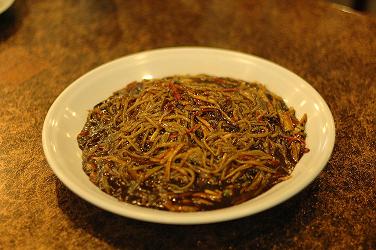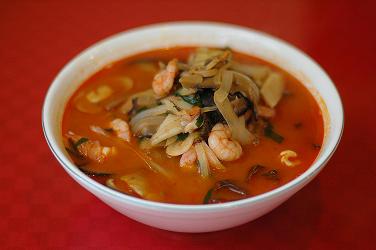Jajangmyeon vs. jjambbong
GOOD VS. Evil, Tom vs. Jerry. There are many rivalries that have existed for ages; but nothing is as mind-boggling as the rivalry we are about to introduce to you. That’s right, for over a century, these two rivals, jajangmyeon and jjambbong, have been battling it out for the number one spot as most loved Chinese-style food in Korea. So who will win in this big match?
The first bowl of jajangmyeon
Many people have a mistaken idea of the origin of jajangmyeon. To my surprise, jajangmyeon (noodles with black bean sauce mixed with vegetables) was first made right here in Korea! It was created when Chinese-Korean immigrants accidentally mixed black bean paste with noodles as a late night snack. This dish came to be known as jajangmyeon. It was around the year 1905 when the first bowl of jajangmyeon was served in Gonghwachun Chinese Restaurant.

Rise in popularity of jajangmyeon
“Jajangmyeon is a dish that has no age boundaries. People young and old alike are attracted to its flavor,” stated Lee Hyun-dai (CEO of Gonghwachun Chinese Restaurant).
Why is jajangmyeon so loved? First of all, the taste itself is not overwhelming. It has a subtly sweet taste to it that many people find agreeable. Also, the low cost of the ingredients makes for a cheap meal (around 3,000 Won). Furthermore, it is not a hard dish to make, so many restaurants quickly spread around the nation serving jajangmyeon.
The first bowl of jjambbong
Jjambbong is a dish that consists of cooking vegetables and different seafood with chilies to form a red soup. Noodles are added to this soup and then eaten together with the vegetables and seafood. The origins of jjambbong are not as clear those of jajangmyeon. There are many stories, but the best known account states that, like jajangmyeon, it was not created in China itself. The first jjambbong dish was created in Nagasaki, Japan by a Chinese immigrant. It was not the same jjambbong we know, however. The soup of the original jjambbong was white. When many people started migrating to Korea around the early 1900s, these Chinese-Japanese immigrants naturally brought with them their food culture. This included jjambbong. The white jjambbong they brought with them eventually evolved into the red jjambbong to suit our Korean tastes better.

Rise in popularity of jjambbong
Jjambbong was created before jajangmyeon. It was loved by the immigrants in Incheon. It was only natural that jjambbong was served alongside jajangmyeon when immigrants opened restaurants as a means of income in the early 1900s. Its spicy taste quickly captivated the tongues of Koreans. It was a good alternative to the sweet flavor of jajangmyeon.
Two in one: jjam-ja-myeon
It is common to see people hesitating when asked to choose what to eat between jajangmyeon and jjambbong. To solve this problem, Kim Jung-hwan invented an ingenious bowl. This bowl was just a regular bowl that contained a divider in the middle that split the bowl into two sides. This eventually came to be known as jjam-ja-myeon. Jjam-ja-myeon is basically a word that takes the first part of both jajangmyeon and jjambbong. Jjam-ja-myeon illustrates a key economic theory: the theory of diminishing marginal utility, which means that the more goods are acquired, the pleasure obtained from the succeeding goods diminishes. Constantly eating jajangmyeon can make you bored. Likewise, constantly eating jjambbong will have the same effect. People want to enjoy diversity. That is why this bowl was so revolutionary.
* * *
What can I say, Koreans love things made in Korea. Maybe that is why, on average, people tend to prefer jajangmyeon to jjambbong. Maybe it is because jjambbong has a spicy flavor that kids do not enjoy it as much. Maybe it is because jjambbong is slightly more expensive. No one knows for sure. We do know that both of these dishes are very well loved by Koreans, however. On a regular day, you might want to eat jajangmyeon. On a rainy day, you might want to eat jjambbong. Or you can try all at once with jjam-ja-myeon. So, how is the weather today?

